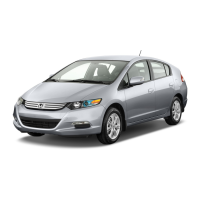
Do you have a question about the Honda 2010 Insight and is the answer not in the manual?
| Brand | Honda |
|---|---|
| Model | 2010 Insight |
| Category | Automobile |
| Language | English |
Details how to use and interpret the multi-information display.
Explains how to operate the audio system.
Details the passenger's front airbag system and its function.
Highlights the most important safety recommendations for drivers and passengers.
Describes the various safety features designed to protect occupants.
Details the supplemental restraint system (SRS) with front and side airbags.
Provides instructions on properly protecting adults and teenagers.
Explains the importance and proper use of seat belts.
Details the supplemental restraint system (SRS) with front airbags.
Describes the function of side airbags for torso protection.
Explains the function of side curtain airbags for head protection.
Details the function of front seat belt tensioners in a crash.
Details the correct method for fastening and positioning seat belts.
Explains the importance of maintaining an upright sitting position for crash protection.
Warns that excessive seat-back reclining can cause serious injury or death in a crash.
Warns that incorrect head restraint positioning reduces effectiveness and increases injury risk.
Warns that improper seat belt positioning can lead to serious injury or death in a crash.
Prohibits incorrect placement of the shoulder belt to ensure effectiveness.
Warns that improper seating posture can cause severe injury or death in a crash.
Warns against placing objects in the airbag's deployment path.
Recommends an upright seat-back position and sitting fully back in the seat.
Emphasizes checking head restraints are in place and properly positioned before driving.
Stresses the importance of ensuring seat belts are correctly positioned before driving.
States that seats with inoperative seat belts should not be occupied.
Provides essential advice for maintaining a safe seating position.
Prohibits sharing seat belts to ensure proper restraint for each occupant.
Advises against adding accessories to seat belts, which can reduce effectiveness.
Warns about the severe risk of injury from airbags when sitting too close.
Warns against placing objects on airbag covers, which can interfere with operation.
Advises occupants to position themselves as far back from airbags as possible.
Advises keeping hands and arms clear of airbag covers to prevent injury.
Warns against attaching objects near doors that could be propelled by side airbags.
Prohibits passengers from riding in unsafe cargo areas or on folded seats.
Advises passengers against standing or changing seats while the vehicle is in motion.
Recommends consulting the dealer before replacing seat back covers to avoid interfering with side airbags.
Identifies and illustrates the various components of the airbag system.
Explains the function and behavior of the SRS indicator.
Explains the dual-stage inflation mechanism of the front airbags.
Explains advanced airbag systems designed to prevent airbag-related injuries.
Describes how the side airbag off indicator functions.
Details dual-threshold airbags that adjust deployment based on seat belt use.
Warns against actions that could damage airbag sensors or prevent proper function.
Highlights the potential damage to sensors or airbag system failure due to incorrect actions.
Details the proper use and function of the lap/shoulder belt.
Details sensors that disable side airbags for child occupant safety.
Explains the function of automatic seat belt tensioners.
Describes the driver's seat position sensor for airbag deployment adjustment.
Explains weight sensors that monitor passenger seat load for airbag control.
Describes the indicator that shows when the passenger's side airbag is off.
Details the indicator that signals when the passenger's front airbag is deactivated.
Describes the indicator for potential problems with airbags or seat belt tensioners.
Emphasizes that all children must be properly restrained in a vehicle.
Recommends that all children, regardless of age, should ride in the back seat for safety.
Warns about the severe risks of unrestrained or improperly restrained children in crashes.
Warns about the serious risks posed by the passenger front airbag to children.
Advises on restraint methods for larger children, including booster seats.
Provides specific safety guidance for small children.
Recommends approved child seats secured properly for infants and small children.
Provides safety recommendations for larger children.
Prohibits rear-facing child seats in the front passenger seat due to airbag risks.
Provides specific safety guidance for infants.
Emphasizes the superior safety of the back seat for children compared to the front.
Provides crucial safety information for restraining infants.
Provides specific safety guidance for small children.
Describes the types of child seats that can be used.
Prohibits incorrect installation of rear-facing child seats.
Recommends placing forward-facing child seats in the back seat, not the front.
Warns that forward-facing child seats in the front seat can be hazardous due to airbags.
Prohibits rear-facing child seats in the front seat due to airbag risks.
Offers guidance on the correct placement of rear-facing child seats.
Reaffirms the safety of back seat placement for rear-facing child seats.
Warns of the fatal risk to infants from front airbags impacting rear-facing child seats.
Notes potential interference of child seats with advanced front airbag systems.
Provides criteria for selecting an appropriate child seat.
Specifies the required safety standard for child seats.
Emphasizes selecting a child seat that is correctly sized for the child.
Stresses the importance of ensuring the child seat fits the specific vehicle seating location.
Warns of severe injury or death from front airbags impacting forward-facing child seats.
Provides critical safety measures if a forward-facing child seat must be placed in front.
Outlines the main steps involved in correctly installing a child seat.
Provides instructions for installing child seats using the LATCH system.
Explains how to remove slack from the seat belt after locking.
Explains how to attach and tighten the tether strap for secure installation.
Emphasizes the importance of securely attaching the child seat to the vehicle.
Describes how to test the child seat's security and stability.
Reinforces the need to ensure the child seat is firmly secured after installation.
Advises clearing the area around anchors for a secure child seat connection.
Provides instructions for installing child seats using a tether strap.
Provides instructions for installing child seats using a lap/shoulder belt.
Details the final step of properly securing the child within the installed seat.
Details the process of placing and attaching the child seat to lower anchors.
Details routing the seat belt, inserting the latch plate, and removing slack.
Explains that tethered child seats can be installed in any back seat position using anchor points.
Explains how to activate the lockable retractor for securing a child seat.
Recommends using a tether for added security in child seat installations.
Describes how to verify if the lockable retractor is properly engaged.
Provides instructions on how to check if a seat belt fits a child correctly.
Asks if the lap belt sits low on the thighs, a key fit indicator.
Advises on transitioning larger children to booster seats and seat belts in the back seat.
Questions whether the child can maintain proper posture and restraint for the entire trip.
Warns of severe injury or death from front airbags impacting children in front seats.
Provides information on selecting and using booster seats for children.
Provides critical safety measures if a child must ride in front.
Advises on booster seat use for children transitioning from child seats.
Provides a height guideline for discontinuing booster seat use.
Details safety measures for booster seats when placed in the front seat.
Warns of serious injury to children from frontal airbags in various improper seating situations.
Warns of serious injury to larger children from side airbags if in their deployment path.
Provides essential actions to take if a child is cleared to ride in the front seat.
Emphasizes reading and understanding all relevant safety information and instructions.
Advises moving the vehicle seat as far back as possible for enhanced safety.
Advises against adding accessories to seat belts, which can reduce effectiveness.
Details the correct and safe seating posture for children in the front seat.
Prohibits incorrect seat belt placement across the neck, which can cause serious injury.
Stresses the importance of ensuring the child's seat belt is correctly and securely positioned.
Prohibits incorrect placement of the shoulder belt to ensure effectiveness.
Prohibits sharing seat belts to ensure proper restraint for each occupant.
Provides an overview of the vehicle's instrument panel.
Explains the meaning of various indicators on the instrument panel.
Details the functions and display of the multi-information display.
Warns that improper use of cruise control can lead to a crash.
Recommends using cruise control only on open highways in good weather.
Warns about the risks of overloading or improperly storing cargo, affecting safety.
Provides information on vehicle load limits and how to determine correct load.
Outlines the steps to calculate the correct load limit for the vehicle.
Describes the operation of the Continuously Variable Transmission.
Explains the function and operation of the anti-lock brake system.
Describes the tire pressure monitoring system and its indicators.
Explains the VSA system's role in stabilizing the vehicle and maintaining traction.
Provides safety precautions to follow when performing maintenance.
Explains how the maintenance minder displays service information.
Explains the use and precautions for the compact spare tire.
Provides step-by-step instructions for changing a flat tire.
Offers troubleshooting steps for when the engine does not start.
Provides instructions on how to safely jump start the vehicle's battery.
Offers guidance on what to do if the engine overheats.
Explains the low oil pressure indicator and immediate actions required.
Explains the malfunction indicator lamp related to emissions control systems.
Details the brake system indicator and its meanings.
Offers guidance on how to safely tow the vehicle in emergencies.
Explains the federally required Tire Pressure Monitoring System (TPMS).

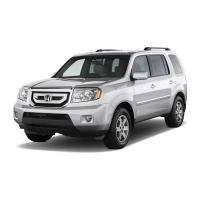



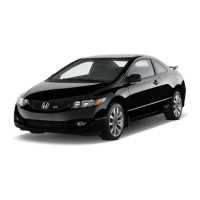


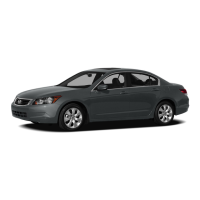
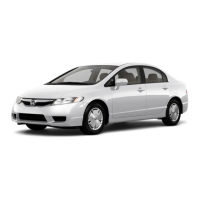
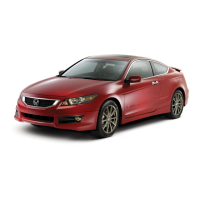

